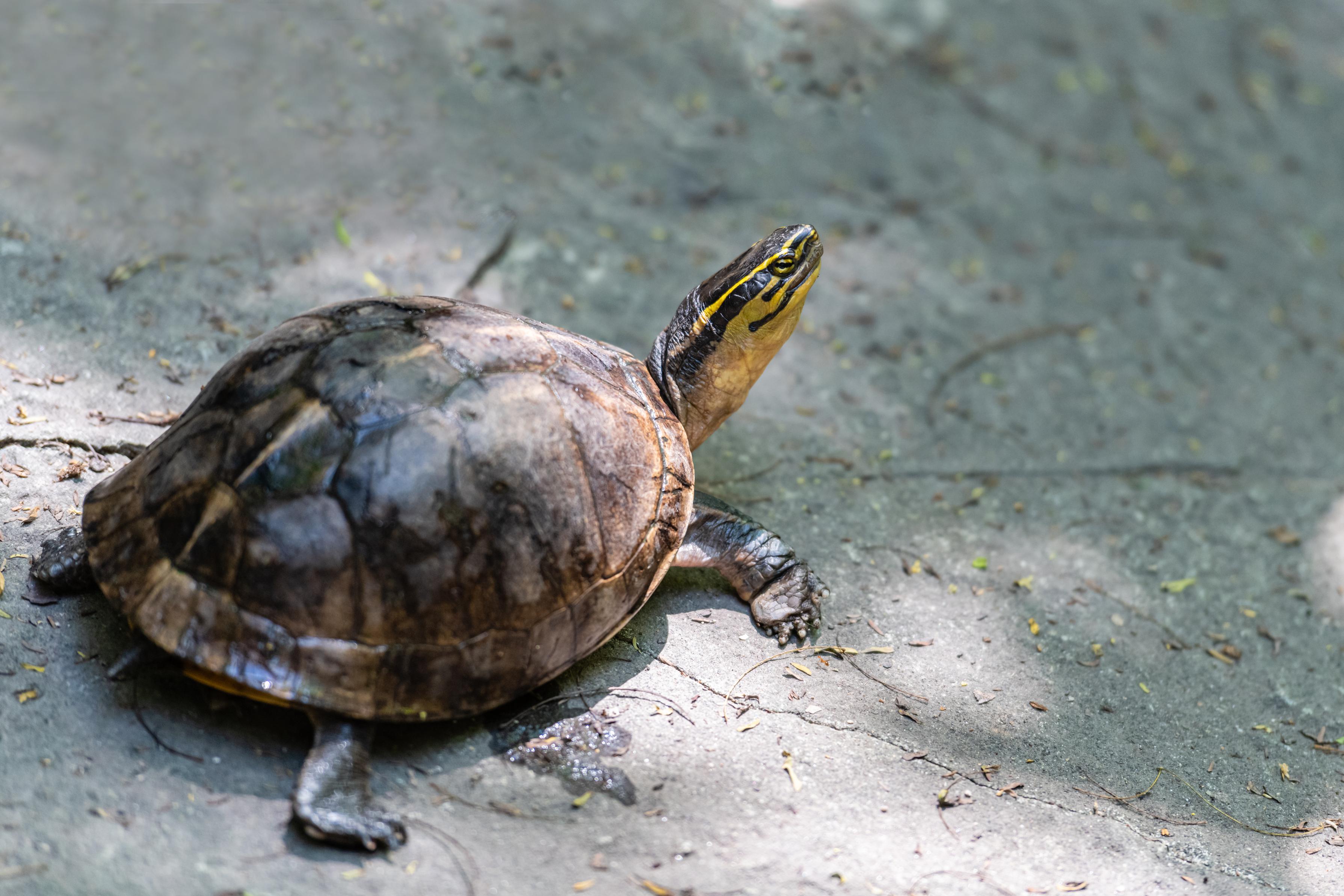Have you ever wondered what turtle poop looks like? Turtles, like all other animals, have their own unique digestive systems that produce waste and excrement.
We’ll also discuss why turtles may produce different types of poop, as well as how to clean it up. So join us as we investigate turtle poop and learn a little bit more about these fascinating creatures.
Turtle poop

Turtle poop can be a pretty smelly topic, but it’s an important one! Turtles are fascinating creatures, and understanding how they digest food and eliminate waste is key to keeping them healthy.
This includes plant matter such as vegetable and fruit peelings, as well as any insects and worms they may have eaten. Turtle poop can also contain parasites and other bacteria, so it’s important to clean up after your pet turtle regularly.
Luckily, turtle poop doesn’t smell as bad as some other animals’ waste, so it’s relatively easy to manage. Next time you’re marveling at your pet turtle, take a moment to appreciate their poop too!
Turtle poop look like
Turtle poop can vary in size and color depending on the diet of the turtle. Generally, it is dark and firm, similar in texture to a cow patty. It also has a strong smell, especially when it has been in the sun for a while.
Turtle poop contains plant matter and undigested bits of food, so it can look quite messy. However, if you look closely, you can sometimes see small green bits, which are turtle’s undigested plant matter.
So, if you’re wondering what turtle poop looks like, it’s usually a dark and smelly substance that contains bits of undigested plant matter.
The benefits of turtle poop
Who knew turtle poop could be so beneficial? Turtle poop, or “turtle guano” as it is more formally known, is a natural fertilizer that has been around for centuries. It is an excellent source of nitrogen, phosphorus and potassium, the three essential nutrients for healthy plant growth.
Turtle guano also helps to aerate the soil and improve drainage, which helps to promote a healthier environment for plants to grow. Not only is it great for plants, but it also helps to reduce the amount of synthetic fertilizers needed in gardens and farms, making it a great eco-friendly alternative.
Turtle guano is also a natural pest repellent, helping to keep pesky critters away from your plants. So, if you’re looking for a natural, eco-friendly way to nourish your plants and keep pests away, then look no further than turtle poop!
Of turtles produce poop
Turtles may be small, but they sure do produce a lot of poop! Turtles generate waste in the form of solid, dry feces and often liquid urates.
Turtles are omnivores, so their diet includes both plants and animals, giving their waste an interesting mix of nutrients. While turtle poop can be smelly, it doesn’t have to be.
It’s important to keep their enclosures clean and their diet balanced to ensure a pleasant environment for both you and your pet turtle.
How often do turtles poop
Have you ever wondered how often turtles poop? Well, you’re not alone – it’s a question that has perplexed many people for years! Turtles are unique creatures, and the frequency of their pooping habits differs from species to species.
Generally speaking, aquatic turtles poop the most, with semi-aquatic and terrestrial turtles pooping less frequently. Aquatic turtles can poop up to several times a day, while semi-aquatic and terrestrial turtles may only poop once every few days.
It’s important to keep in mind that diet and environmental factors can also affect how often a turtle poops. So, if you’re wondering how often your particular turtle is going to poop, it’s best to take into consideration their diet, habitat, and species.
You do with turtle poop
Turtle poop? It may sound like an unlikely topic of conversation, but it can actually be quite useful!
By examining the scat, researchers can learn more about a turtle’s diet, health and habitat. It can also be used to identify different species of turtles.
So, next time you hear someone talking about turtle poop, don’t be so quick to dismiss it – turtle poop is a valuable tool for researchers!
The dangers of turtle poop
Turtle poop may not be the most glamorous of topics, but it is an important one to discuss. Turtles are a beloved pet for many, yet their excrement can be dangerous. Turtle poop can contain parasites and bacteria that can be harmful to humans, as well as other animals in the home.
Turtle poop can contain parasites and bacteria that can be harmful to humans, as well as other animals in the home. It is important to take the necessary precautions to protect yourself, your family, and your other pets from potential health risks associated with turtle poop. These precautions include regular cleaning and disinfecting of the turtle’s habitat, washing your hands after handling the turtle or its poop, and seeking medical attention if you become ill after being exposed to turtle poop.
Taking these steps will help ensure a safe and healthy environment for you, your family, and your pet turtle.
Conclusion
In conclusion, while turtle poop may be unpleasant to some, it is an important part of a healthy turtle’s diet. Turtles need to consume a wide variety of foods in order to stay healthy, and the occasional turtle poop is a natural byproduct of this process.
Turtles have evolved to be able to process most of their waste, and so it is not generally a cause for concern. If a turtle’s poop seems excessive or smells bad, however, it is worth considering that the turtle may not be getting enough food or may be suffering from an underlying health issue.